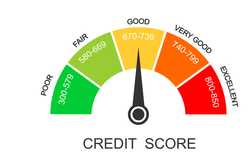- Contributions may be tax-deductible
- Contributions and earnings grow tax-deferred
Best Retirement Accounts for February 2025

Our evaluations and opinions are not influenced by our advertising relationships, but we may earn a commission from our partners’ links. This content is created by TIME Stamped, under TIME’s direction and produced in accordance with TIME’s editorial guidelines and overseen by TIME’s editorial staff. Learn more about it.
If you feel financially unprepared for retirement, you’re not alone. More than half of Americans (55%) have concerns about achieving financial security in retirement, according to a 2024 report from the National Institute on Retirement Security.
Of course, the sooner you start saving for retirement, the easier it can be to reach your goals—and contributing to a retirement account (or two) is a great way to get started. Here are the best retirement accounts for building a nest egg and ensuring a financially secure future.
An individual retirement account, or IRA, is a personal savings plan that lets you save for retirement on a tax-free or tax-deferred basis. For 2024, you can contribute up to $7,000, or $8,000 if you’re 50 or older. Generally, a traditional IRA makes sense if you want an upfront tax break or expect to be in a lower tax bracket in retirement. A Roth IRA is a better fit if you expect to be in a higher tax bracket when you retire, want tax-free withdrawals, or want to avoid drawing down the account through required minimum distributions (RMDs).
| Plan | Best for |
|---|---|
Traditional IRA | Upfront tax breaks |
Roth IRA | Tax-free growth and withdrawals |
Spousal IRA | Non-income-earning spouses |
Anyone with earned income can contribute to a traditional IRA (earned income includes wages, salaries, tips, and net earnings from self-employment). You can deduct all or a portion of your contributions, depending on your income, tax filing status, and whether you or your spouse has a retirement plan at work. Contributions and earnings grow tax-free, and withdrawals in retirement are taxed as ordinary income.
You can contribute to a Roth IRA if you have earned income and your modified adjusted gross income (MAGI) is below the annual income limits set by the IRS. There’s no upfront tax break, but the account grows tax-free, and qualified withdrawals in retirement are also tax-free. You can withdraw your contributions at any time without paying taxes or penalties, though you should only do so in an emergency since it will reduce your potential earnings.
You typically need earned income to contribute to an IRA. However, a spousal IRA offers an exception: A working spouse can contribute to an IRA on behalf of a spouse who doesn’t work for pay. The working spouse must have enough income to cover the IRA contributions, and the couple must be married and file jointly. You can set up a spousal IRA as a traditional or Roth IRA, subject to the same rules and benefits as non-spousal accounts.
One of your most valuable job benefits may be your employer-sponsored plan. These plans have higher contribution limits than IRAs, and you can contribute up to $23,000 to a 401(k), 403(b), most 457s, and the federal government’s Thrift Savings Plan—plus a $7,500 catch-up contribution if you’re 50 or older. If your employer offers a match, the overall contribution limit—including elective deferrals and employer matching—increases to $69,000, or $76,500 with the catch-up contribution. You generally have to wait until age 59 ½ to access money in the account without paying a penalty.
The type of plan you have access to depends on whether you work for a for-profit company, non-profit organization, or a government agency.
| Plan | Best for |
|---|---|
401(k) | For-profit company employees |
403(b) | Non-profit organization employees |
457(b) | Government agency employees |
Thrift Savings Plan | Federal employees and uniformed services members |
Many for-profit companies offer a traditional or Roth 401(k) plan. With a traditional 401(k), you’ll make contributions with pre-tax dollars and pay taxes on withdrawals in retirement. Roth 401(k) contributions are made with after-tax dollars (so they aren’t tax-deductible), but withdrawals in retirement are generally tax-free. If you have a Roth 401(k) with an employer match, the match can be made to a traditional or Roth account, depending on your employer’s policy. However, you’ll owe income taxes on the match the year it’s received if it goes into a Roth account, so plan accordingly.
Sometimes called tax-sheltered annuity or TSA plans, 403(b) plans work much like 401(k)s but are offered by public schools and 501(c)(3) tax-exempt organizations, like churches and charities. You make pre-tax contributions, and your employer can also contribute to your account.
Money in the account grows tax-free, and you’ll pay taxes on withdrawals in retirement. Some 403(b) plans permit Roth accounts, in which case you save after-tax dollars and make tax-free withdrawals in retirement.
A 457(b) functions much like a 401(k), but it’s designed for employees of state and local governments, and some 501(c) tax-exempt organizations. Contributions are made with pre-tax money and grow tax-free, and withdrawals in retirement are subject to income taxes. Employers can also contribute to the account, but matches are rare. Like other employer-sponsored plans, 457(b)s can be a traditional or Roth account.
Notably, 457(b) plans offer a special “last 3-year catch-up” that lets you contribute twice the annual limit or 100% during the three years before retirement. However, you can’t use the special and age 50+ catch-up elections during the same year.
A Thrift Savings Plan is similar to a 401(k), but it’s only available to federal employees and military service members. You contribute pre-tax dollars through automatic payroll deductions, and your cash grows tax-deferred until you make withdrawals in retirement. Some TSPs are Roth accounts that function like Roth 401(k)s. Your employers might make matching contributions, though you’ll need to allocate at least 5% of your pay to get the full match.
You may not have access to an employer-sponsored plan if you’re self-employed or a small business owner. Still, that doesn’t mean you don’t have retirement plan options. In addition to the standard traditional and Roth IRA accounts that individuals can open, you can establish a SIMPLE IRA, SEP IRA, or solo 401(k), which offer many of the same tax advantages as regular IRAs and 401(k)s.
These plans have higher contribution limits than IRAs, making them a good option if you want to supercharge your—and your employees’—retirement savings. Here are the limits for 2024:
| Plan | Best for |
|---|---|
SIMPLE IRA | Employers with 100 or fewer employees and self-employed individuals |
SEP IRA | Self-employed individuals and small business owners |
Solo 401(k) | Small businesses without employees |
The Savings Incentive Match Plan for Employees (SIMPLE) IRA functions much like a traditional IRA but comes with a higher contribution limit. It’s available for employers (including self-employed individuals) with 100 or fewer employees. Contributions grow tax-deferred in a traditional SIMPLE IRA or tax-free with the Roth version.
The Simplified Employee Pension (SEP) IRA operates much like a standard IRA but offers a higher contribution limit. It’s available to small business owners and self-employed individuals. Unlike other plans, employees don’t contribute to a SEP IRA. Instead, SEP IRAs are funded solely by employer contributions. Contributions grow tax-deferred if you establish a traditional SEP IRA or tax-free with a Roth SEP IRA.
A solo 401(k) is designed for business owners and their spouses who work at least part-time—not for businesses with employees. It works similarly to a standard 401(k) plan, but you can contribute to the account as both the employee and employer. Like other types of 401(k)s, solo 401(k)s can be either traditional (tax-deferred) or Roth (tax-free).
Our best retirement accounts list includes some of the most popular ways to build a nest egg. However, other tax-advantaged accounts can also help you fund your golden years. For example, a health savings account (HSA) offers tax-deductible contributions, tax-free growth, and tax-free withdrawals when you use the money for qualified healthcare expenses. When you turn 65, you can use the money for any reason without penalty (though withdrawals are taxed as ordinary income).
Consider consulting with a financial planner or advisor for help choosing the best retirement plan(s) for your situation.
There’s no single account that’s best for saving a nest egg. Instead, most savers will benefit from funding multiple accounts—and taking advantage of the perks each one offers. For example, you might save up to the match in your employer-sponsored plan, max out your IRA contributions, and then put more cash toward maxing out your employer plan. After that, consider saving for retirement in a taxable investment account.
A Roth IRA doesn’t offer any upfront tax benefits, but the account grows tax-free and qualified withdrawals in retirement are tax-free. There are also no minimum distributions (RMDs) during the account owner’s lifetime, so the account can continue growing for your heirs if you don’t need the income.
Contributions to a traditional 401(k) are tax-deductible in the year you make them, lowering your tax bill today. There are also higher annual contribution limits, and you might receive an employer match, so you could build your nest egg faster. However, you’ll pay taxes on the money you eventually withdraw from the account, and you must take RMDs.
A Roth IRA makes sense if you expect to be in a higher tax bracket in retirement and want to take advantage of years of tax-free growth. A 401(k) works well if you want an upfront tax deduction and can set aside more money each year. Of course, contributing to both a Roth IRA and a 401(k) can give you more flexibility in retirement.
The $1,000 a month rule for retirement is a guideline for estimating your retirement savings needs, assuming you’ll withdraw 5% from your investments each year. According to the rule, you should set aside $240,000 for every $1,000 of monthly income you’ll need in retirement. So, if your monthly budget in retirement is $5,000, your nest egg should be $1.2 million ($240,000 × 5). Of course, the guideline doesn’t work for everyone. Your needs may vary based on your financial goals, investment returns, retirement age, inflation, and other factors.
The information presented here is created by TIME Stamped and overseen by TIME editorial staff. To learn more, see our About Us page.



